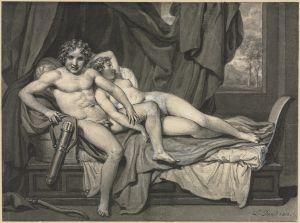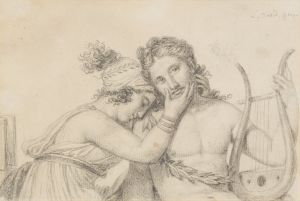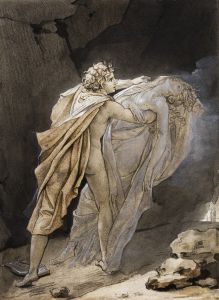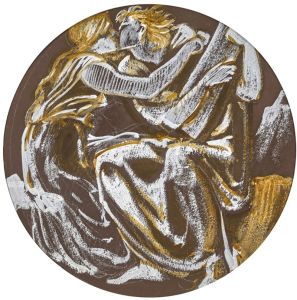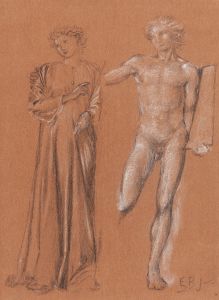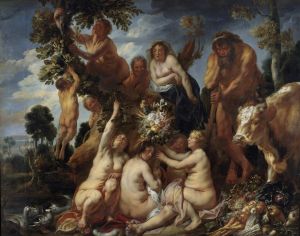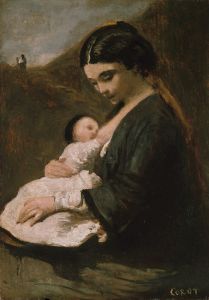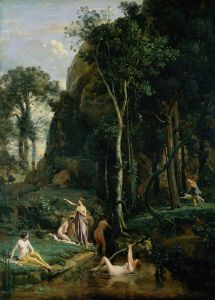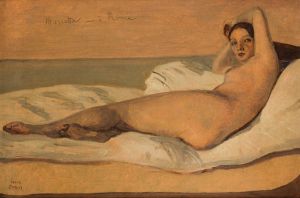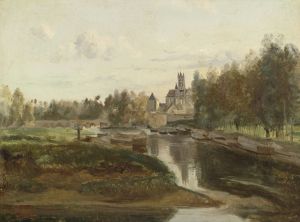
Wounded Eurydice
A hand-painted replica of Jean-Baptiste-Camille Corot’s masterpiece Wounded Eurydice, meticulously crafted by professional artists to capture the true essence of the original. Each piece is created with museum-quality canvas and rare mineral pigments, carefully painted by experienced artists with delicate brushstrokes and rich, layered colors to perfectly recreate the texture of the original artwork. Unlike machine-printed reproductions, this hand-painted version brings the painting to life, infused with the artist’s emotions and skill in every stroke. Whether for personal collection or home decoration, it instantly elevates the artistic atmosphere of any space.
Jean-Baptiste-Camille Corot, a prominent French landscape and portrait painter, is known for his significant contributions to the development of landscape painting in the 19th century. While Corot is primarily celebrated for his landscapes, he also ventured into historical and mythological subjects, one of which is the painting "Wounded Eurydice."
"Wounded Eurydice" is a lesser-known work by Corot, reflecting his interest in classical mythology. The painting depicts the tragic figure of Eurydice, a character from Greek mythology. Eurydice was the wife of Orpheus, a legendary musician and poet. According to myth, Eurydice died from a snake bite and descended into the Underworld. Orpheus, heartbroken, ventured into the Underworld to bring her back to the world of the living. His music softened the hearts of Hades and Persephone, who agreed to allow Eurydice to return with him on the condition that he not look back at her until they reached the surface. However, Orpheus, overcome with anxiety, looked back too soon, causing Eurydice to vanish forever.
Corot's depiction of Eurydice captures the moment of her wounding, emphasizing the emotional and physical vulnerability of the character. The painting is notable for its delicate portrayal of the female form and the subtle use of light and shadow, which are characteristic of Corot's style. The composition likely reflects Corot's ability to blend elements of realism with the idealized forms of classical art, a hallmark of his approach to mythological subjects.
The painting is executed with a soft, muted palette, which Corot often employed to create a sense of tranquility and introspection. This choice of color and tone enhances the somber mood of the scene, inviting viewers to reflect on the themes of love, loss, and the ephemeral nature of life. Corot's brushwork in "Wounded Eurydice" is typically fluid and expressive, contributing to the overall sense of movement and emotion within the piece.
While "Wounded Eurydice" may not be as widely recognized as some of Corot's other works, it exemplifies his versatility as an artist and his ability to convey complex narratives through his art. The painting serves as a testament to Corot's engagement with classical themes and his skill in rendering the human figure with sensitivity and grace.
Corot's influence on the art world extends beyond his own works; he played a crucial role in the transition from the neoclassical tradition to the more naturalistic and expressive approaches that characterized the Barbizon School and later Impressionism. His exploration of mythological subjects, as seen in "Wounded Eurydice," highlights his commitment to exploring a wide range of themes and styles throughout his career.
Today, Corot's works, including "Wounded Eurydice," are appreciated for their technical mastery and emotional depth. They continue to be studied and admired for their contribution to the evolution of modern art, reflecting the enduring legacy of Jean-Baptiste-Camille Corot as a pivotal figure in the history of painting.





